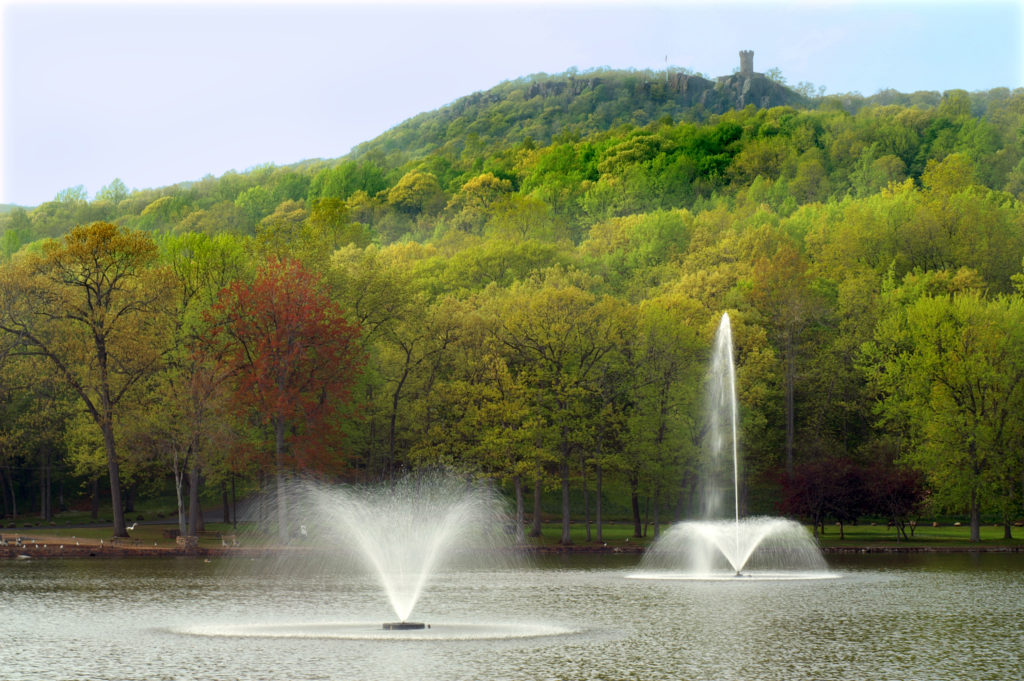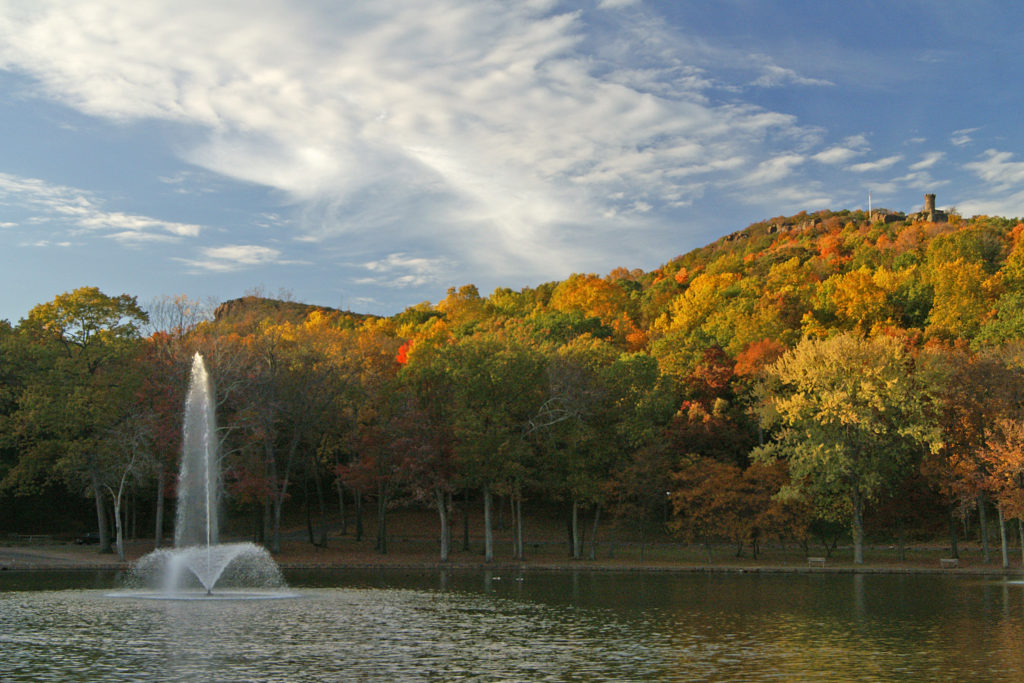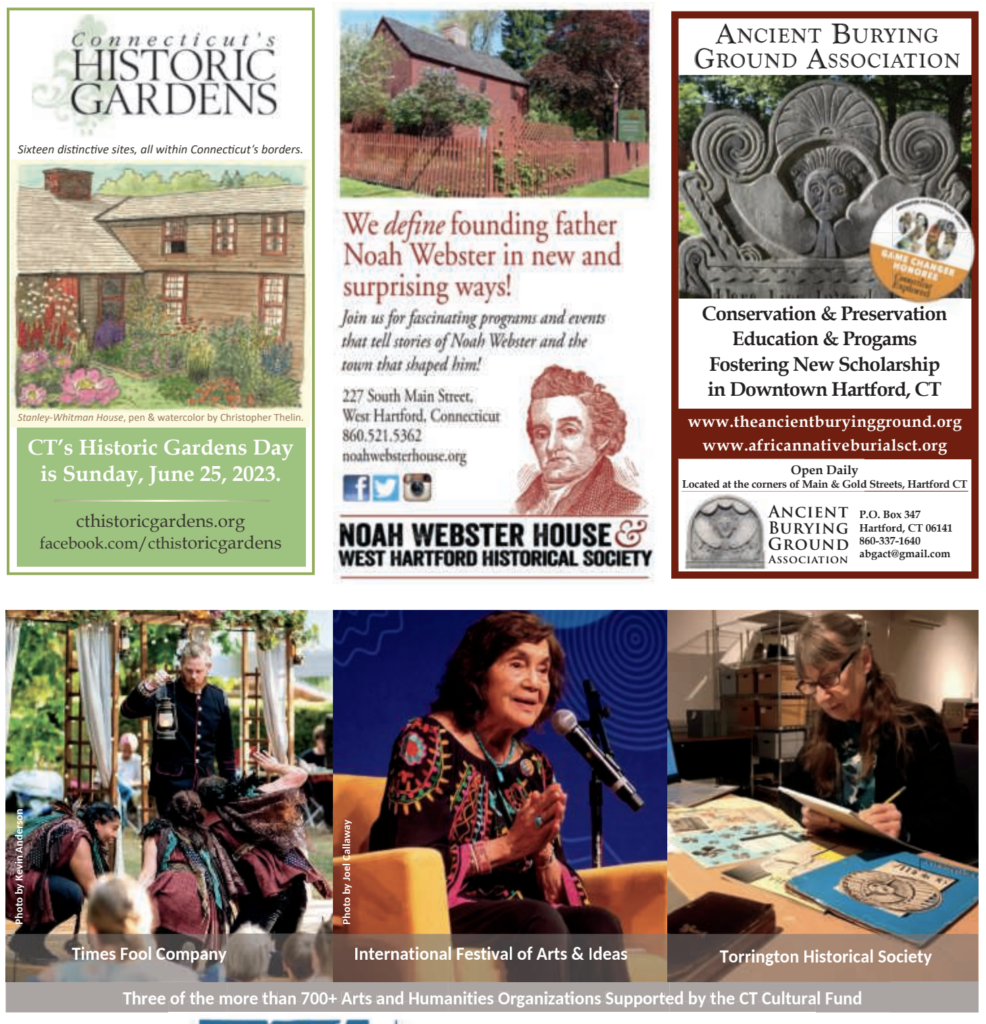By Justin Piccirillo
(c) Connecticut Explored Inc., Spring 2023
Subscribe/Buy the Issue!
In 1869, just two years after Meriden was incorporated as a city, wealthy industrialist Walter Hubbard acquired his first parcel of land within the city’s Hanging Hills area. Over the next 25 years he continued to acquire land at a fast pace, planning to shape this space into an urban recreation area. In the late 1890s Hubbard initiated the construction of a park and financed the work of the architects and builders who realized his vision of naturalistic roads, pathways, waterways, structures, and buildings. In April 1897 land was cleared to begin construction and to develop the park’s centerpiece, Mirror Lake.
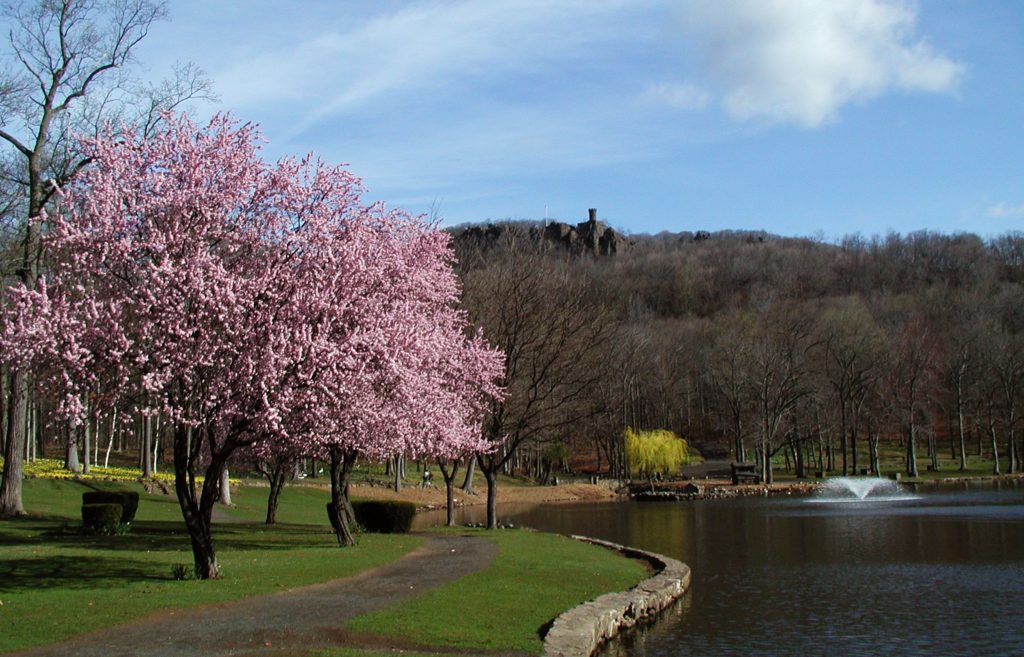 Hubbard decided that he needed a second opinion on his park’s design and sought the advice of the prominent urban park designer (and Hartford native) Frederick Law Olmsted. Olmsted was quick to connect Hubbard with his son, John Charles. Under the younger Olmsted’s guidance, the park’s architecture changed from a classical aesthetic to a more rustic style that incorporated rock and timber from the premises.
Hubbard decided that he needed a second opinion on his park’s design and sought the advice of the prominent urban park designer (and Hartford native) Frederick Law Olmsted. Olmsted was quick to connect Hubbard with his son, John Charles. Under the younger Olmsted’s guidance, the park’s architecture changed from a classical aesthetic to a more rustic style that incorporated rock and timber from the premises.
As the park continued to grow and take shape at the start of the 20th century, Hubbard prepared to build a 32-foot stone observatory to be known as Castle Craig Tower, inspired by a bridge he had seen while traveling in Scotland. From the tower’s top, it is possible to see most of the Quinnipiac Valley region, Long Island Sound, and the distant higher peaks of southern New England.
On October 29, 1900 Walter Hubbard hosted a dedication to commemorate the completed Castle Craig Tower. With 250 people in attendance, according to the Meriden Daily Journal, and in the shadow of the landmark tower, he formally donated the park and tower to the people of Meriden.
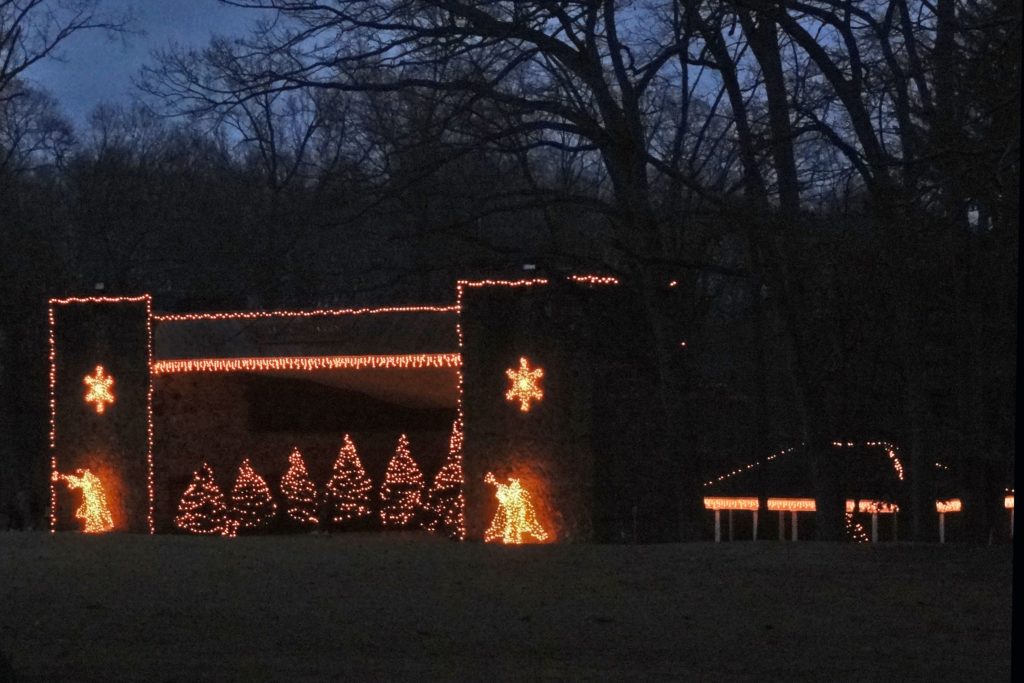 The park has continued to flourish since Hubbard’s death in 1911. It has witnessed improvements to its many structures and seen new and creative landscape techniques in the decoration of its many flower beds. In 1949, the first daffodils were planted in the park – an event that spawned a “Daffodil Day” in the 1950s and the inception of the Meriden Daffodil Festival some 30 years later.
The park has continued to flourish since Hubbard’s death in 1911. It has witnessed improvements to its many structures and seen new and creative landscape techniques in the decoration of its many flower beds. In 1949, the first daffodils were planted in the park – an event that spawned a “Daffodil Day” in the 1950s and the inception of the Meriden Daffodil Festival some 30 years later.
Hubbard Park has always been an active public space, and the park’s popularity has steadily grown. The Meriden Daffodil Festival began as a way for the community to come together in the springtime to celebrate with food, a parade, fireworks, and, of course, daffodils. The Festival of Silver Lights is another celebration featuring seasonal lights that are displayed throughout the park in the winter months. More than 300 lighted displays are mounted throughout the park, and more than half a million lights are used.
Today the park comprises approximately 1,800 acres of carefully kept woodlands and streams, dramatic cliff faces, flower gardens, and the James Barry Bandshell, along with its original showpiece, Mirror Lake.
In 1997 Hubbard Park was listed on the National Register of Historic Places.
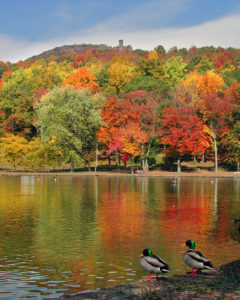 Every day people from all over the region visit Hubbard Park for its various recreational opportunities. It is an ideal spot for hiking and picnics, and the park includes amenities such as a community swimming pool, a safe playscape, and courts for pickleball and tennis. It is easily accessed from I-691 in Meriden.
Every day people from all over the region visit Hubbard Park for its various recreational opportunities. It is an ideal spot for hiking and picnics, and the park includes amenities such as a community swimming pool, a safe playscape, and courts for pickleball and tennis. It is easily accessed from I-691 in Meriden.
Justin Piccirillo is a public school teacher in the Connecticut schools. He is also an artist, political cartoonist, musician, and historian. He has written extensively on local history; his books include Hubbard Park (2021) and the forthcoming Art and Artisans of Meriden, both from Arcadia Publishing. Piccirillo lives in Meriden with his wife and three sons and their families.
Explore!
See our back issues online at ctexplored.org.
Christine Woodside, “Here’s an irony: without cities and cars, Connecticut may not ever have developed its hundreds of miles of hiking trails,” Connecticut Explored, Summer 2008
____

